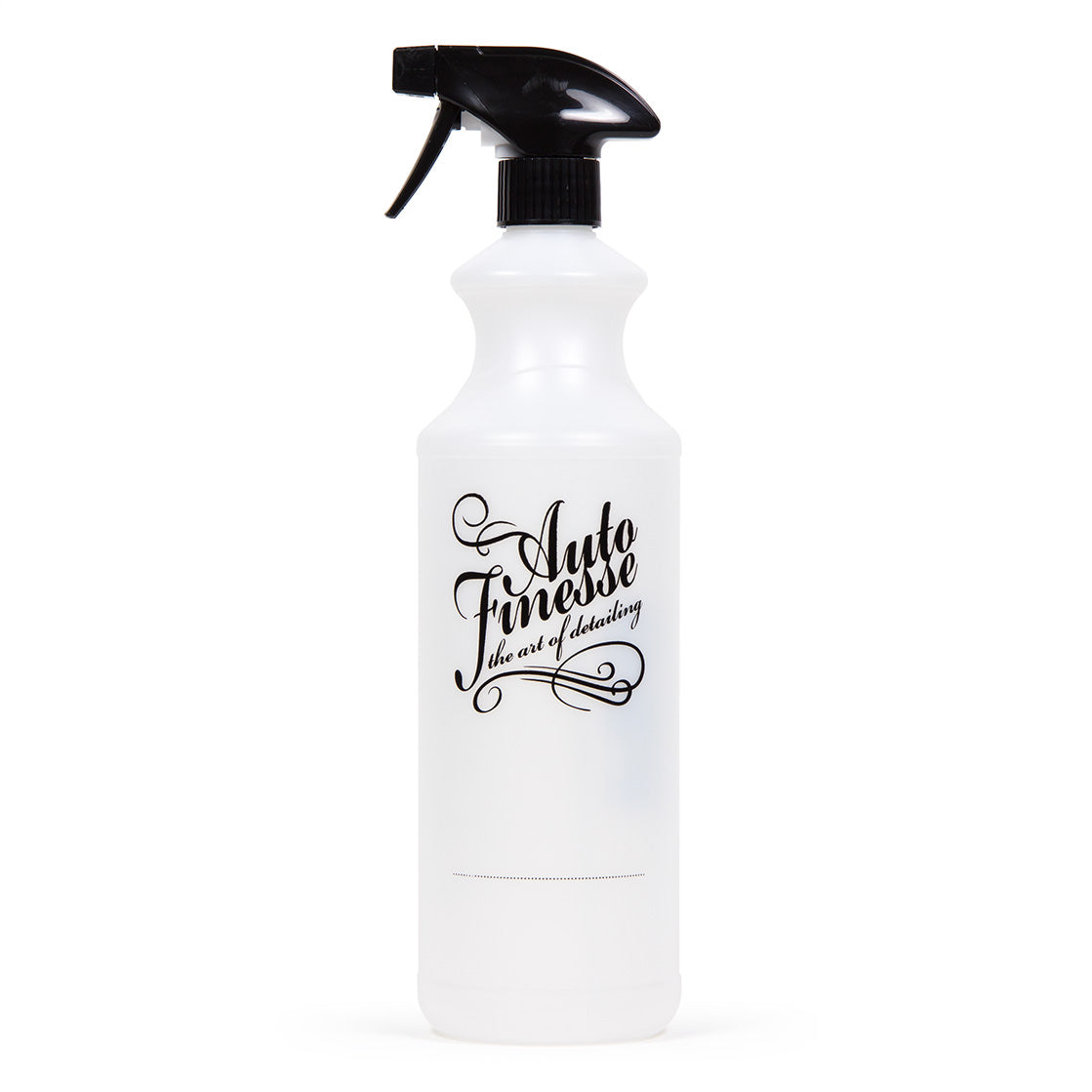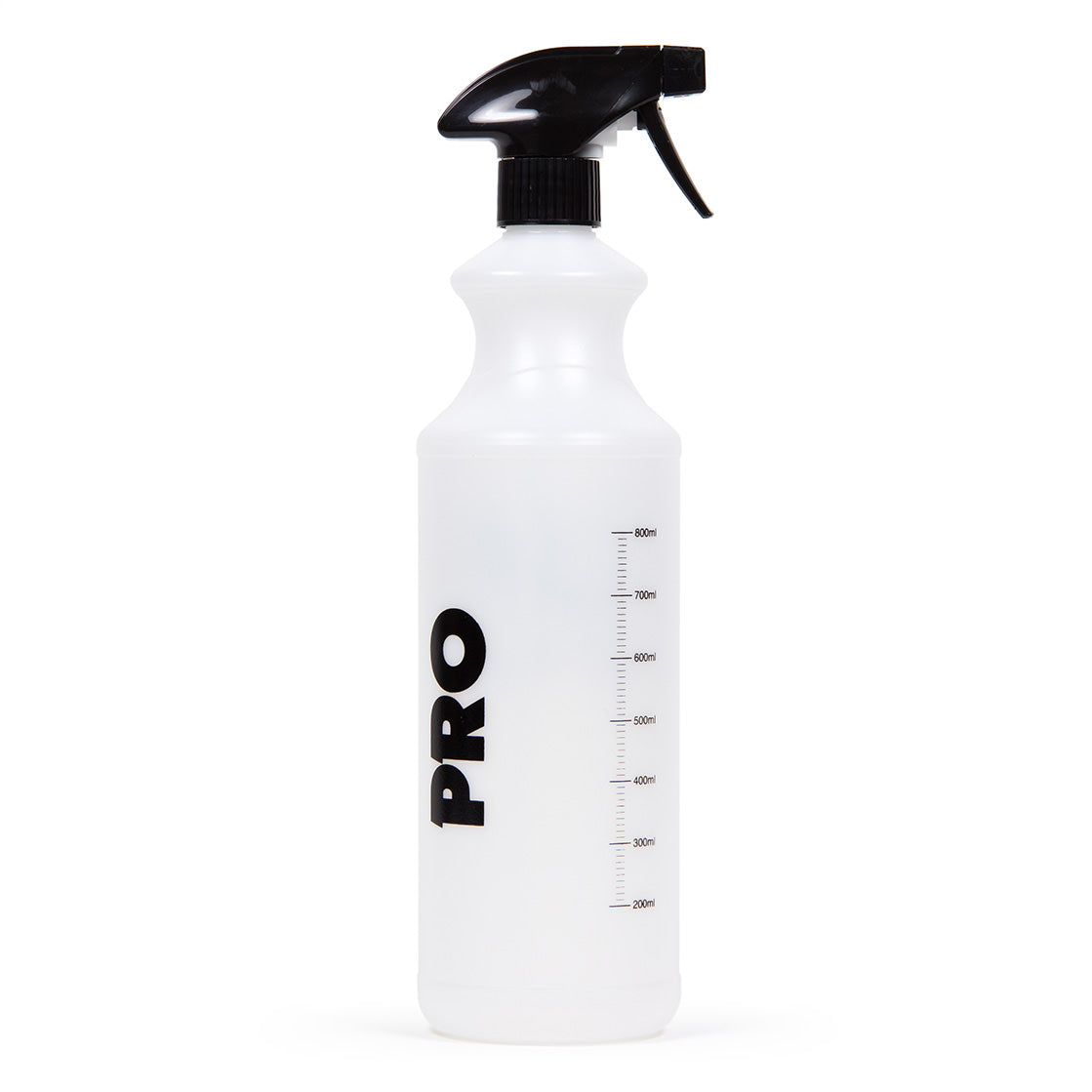

We Say
If you're a devoted Auto Finesse fan and often buy their products in bulk sizes then you'll love the Pro Range Mixing Bottle. With attractive branding and an accurate measuring scale printed on the side, you'll no longer find yourself having to guess when making up dilutions of your favourite products. One thing to note though; if you want to use your Auto Finesse Pro Range Mixing Bottle with chemically-aggressive chemicals (e.g. Auto Finesse ObliTARate), then you should swap the supplied spray head for an Atomiza Chemical Spray Head, which is much more chemically resistant.
Key Features
Description
Specification
| Adjustable Spray Pattern | Yes |
|---|---|
| Capacity | 1 L |
| Chemically Resistant | Yes |
| Construction | High-density polyethylene bottle and polypropylene spray head |
| Promo Offer | BUY 3 OR MORE SAVE 5% |
How To Use
Making up diluted solutions is a relatively easy task, but it's worth noting that some confusion can arise from differences in the way that car care product manufacturers quote dilution ratios. Strictly speaking, dilution ratios should be quoted as the number of parts of original chemical in the total number of parts of diluted solution. Accordingly, a dilution ratio of 1:10 would be achieved by making up a solution containing one part neat chemical and nine parts water, i.e. ten parts in total (giving a dilution ratio of one in ten). However, it's far more common for manufacturers to quote dilution ratios in parts dilutant to parts original chemical. Accordingly, a dilution ratio of 10:1 would be achieved by making up a solution containing ten parts water and one part neat chemical, i.e. eleven parts in total (giving a dilution ratio of ten to one). It contrast to the strict definition, this produces a slightly weaker solution, and for this reason we recommend that this latter interpretation is adopted whenever doubt about the ratio arises, as it's far safer to work with a solution that's too weak rather than one that's too strong.


